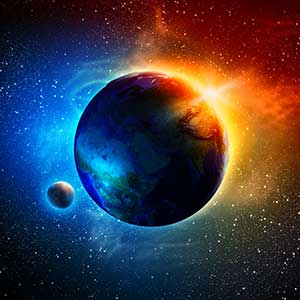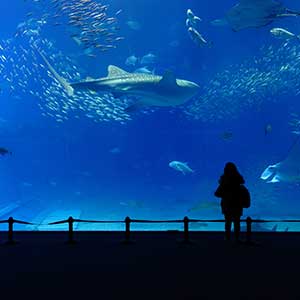Your cart is currently empty!
Earth & Space Science
In Accelerate Online Academy’s Earth & Space Science, Students in the first semester will focus on space science. The second semester focuses on Earth science.
Semester A
In the first semester students will learn about the scientific method and hone their understanding of using scientific measurements to Earth and Space Science. Also included are lessons on Earth maps and globes including detailed instruction on how to find specific locations using latitude and longitude.
Much of the first semester focuses on space science. Students will learn about Earth movements, seasons, the Moon, tides, solar and lunar eclipses, the Sun and its role as the main source of light and energy in the solar system. They will learn about planets, asteroids, meteors, comets and their orbits and how force gravity holds it all together.
Outside the solar system there are lessons on stars, constellations, nebula, the Milky Way and galaxies beyond.
There have been many recent discoveries in space science. Accordingly, careful attention has been given to presenting the most updated information available in areas of discovery such as stars with planets and the latest methods of detecting them as well as a look at NASA’s most recent Curiosity landing on the Martian surface.
Semester B
In the second semester study zeros in closer to home: Earth science. Yet, the coursework is uniquely integrated and applied to disciplines of study outside of Earth science. Starting with the Earth’s interior students study rocks and minerals, volcanoes, earthquakes, undersea ridges, trenches and mountains and how the study of Earth’s geologic history helps explain these phenomena.
On the Earth’s surface students study weathering, soil and erosion as well as water in all its forms the water cycle, oceans and ocean currents.
Above the Earth they will study the atmosphere: its composition, air pressure and air movement. This knowledge is then applied to lessons on how human populations are affected by natural resources, renewable and non-renewable, both on and inside the Earth.
These Earth and Space Science Grade 7 lessons are integrated with lessons that discuss how humans and living organisms are affected by air and water pollution, acid rain, changes in the ozone layer and how these conditions influence biodiversity, habitat loss and species survival.
The course is capped off by lessons that take an in-depth look at the process of technology design giving students a look at of how scientists and technical designers work together to achieve common goals.
Lastly, students are taught about the kinds of professions that currently exist in the science and technology fields and learn about the necessary academic preparation needed to gain employment in these branches of study.
Semester A
Major Concepts:
- Application of the scientific method observation skills to Earth and space studies.
- Learning to measure using units of time and metric dimensions and use of longitude and latitude to pinpoint coordinates on maps and globes.
- Learn the types of bodies that populate the Solar System, their descriptions, names, orbital relationships and relative sizes, compositions and distances between bodies.
- Conceptualize relationships in terms of star systems compared to galactic systems and intergalactic in terms of size and distances measured in metric scales, astronomical units and light years.
- Learn about the methods and technology scientists use to observe and make discoveries about phenomena that exist vast distances from Earth.
Semester B
Major Concepts
- The Earth’s geologic structure, internally and externally, is a dynamic, constantly changing system impelled by forces of gravity, pressure, heat convection and the Earth’s rotational force creating volcanism and plate tectonics, mountain formation, ocean trenches and earthquakes.
- Water is a significant feature of Earth covering 75% of the planet’s surface. The water cycle plays a essential role supporting plant and animal life. Solar warming of oceans and lakes affects air movement, weather and ocean currents. Oceans’ effect on air temperatures and humidity levels play a major role in Earth’s warming and cooling trends over long periods of time.
- The composition of Earth’s atmosphere gone through many changes over billions of year which scientists have analyzed from evidence seen in ancient geologic samples. Shorter time scales have seen an increase in carbon dioxide, ozone, nitrous oxide and ozone levels that raise concern regarding Earth’s warming trends and damage to Earth’s protective ozone layer raising concerns as to how this will affect human and animal life.
- Natural resources, such as water, plant life, animal life, metals and minerals, and energy resources, e.g. petroleum, solar, geothermal, hydroelectric are categorized as renewable and non-renewable and viewed in context with human population growth, biodiversity, species loss and species survival.
- Weathering and soil erosion caused by wind, freezing, ice and water impelled by gravity affect the tearing down of landscapes and rock formations and the building up of ocean floors, river and lake bottoms.
- Scientific discoveries and technological advancement work together to achieve a common goal. Technology can be the application of scientific principles and scientists use technology to make new discoveries.
What TO EXPECT
See what our program is like after you get enrolled for parents and students.
Full-Time ProgramS
Our full time online tuition programs include enrollment for the school year (i.e. two semesters). Tuition varies based on our different programs. We recommend that students wishing to take 4 or more individual classes apply to our Full-Time Tuition Programs.
Highly Qualified Teachers 24/7 Access to Learning Platform Optional Weekly Group Synchronous Sessions And More!








